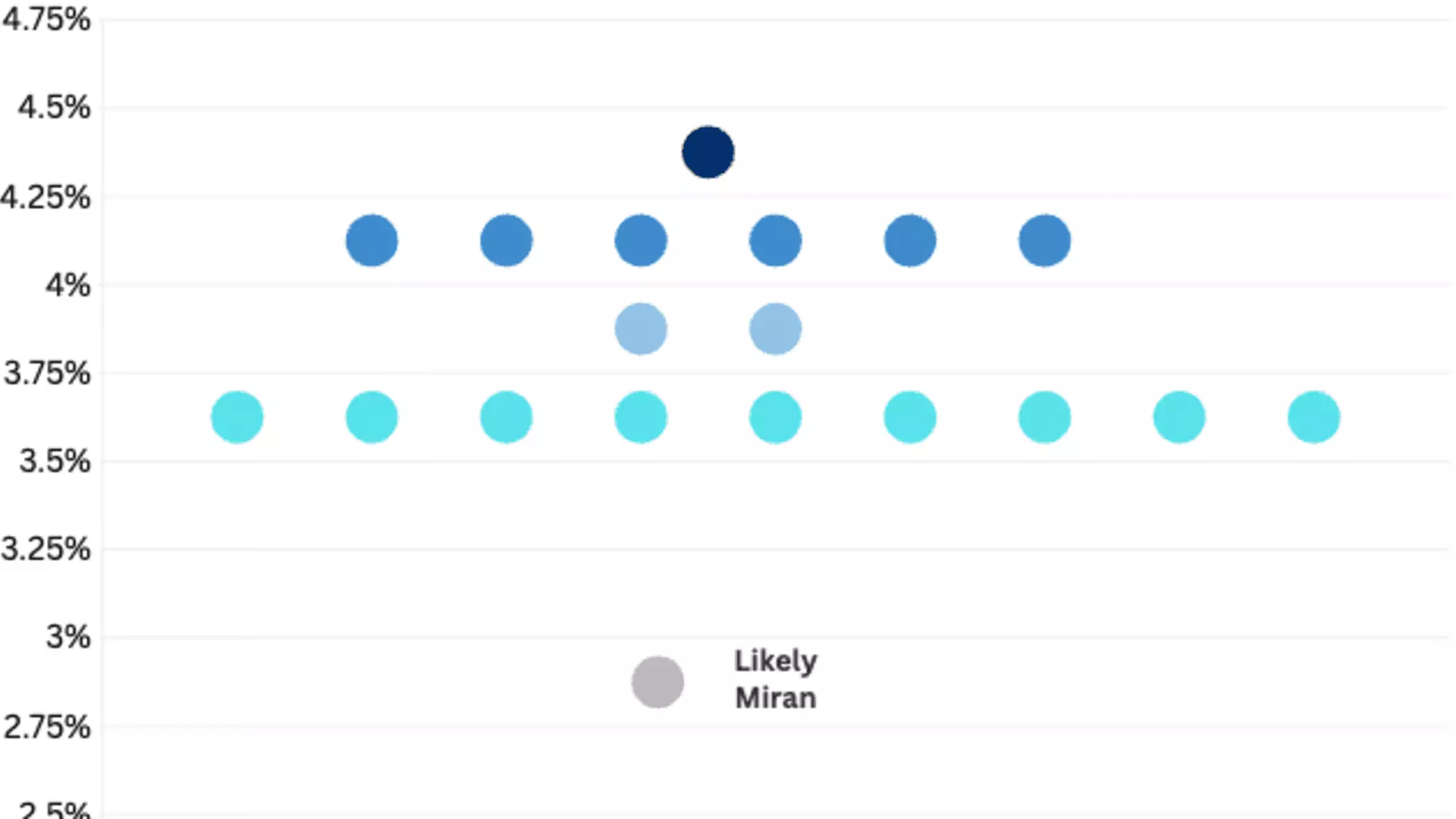In recent weeks, the Federal Reserve’s decision-making process has revealed unsettling tensions that threaten the integrity of our monetary policy. The case of newly-confirmed Governor Stephen Miran epitomizes this internal discord. Miran’s bold dissent, advocating for a half-point rate cut instead of the consensus quarter-point, is not just an isolated stance but a deliberate act signaling an undercurrent of disagreement within the Fed. His position questions the longevity and prudence of the Fed’s cautious approach, suggesting that a more aggressive monetary easing might be necessary to navigate the fragile economic landscape. This dissent is emblematic of a deeper ideological rift, exposing the vulnerabilities of the Fed’s position amid political pressures and a maturing economy that may demand more assertive intervention.
Miran’s call for an even more drastic rate reduction than his peers highlights a fundamental debate about the appropriate scope of monetary policy. While others seem hesitant to pursue bold cuts, Miran perceives the current strategy as insufficient to stimulate growth or counteract persistent economic uncertainties. His stance, rooted in a belief that the economy warrants sizeable measures, could radically alter the trajectory of monetary policy if it gains momentum. Such a divergence demonstrates a crucial lapse in the Fed’s internal cohesion, raising questions about the direction of future rate adjustments and the underlying motivations guiding these decisions.
Political Intrigue and the Erosion of Central Bank Independence
Miran’s appointment, with roots firmly planted in the political landscape, complicates the narrative further. His nomination by former President Donald Trump suggests that monetary policy is increasingly intertwined with partisan influence. Critics argue that Miran’s role symbolizes a White House attempt to wield undue influence over the Fed, compromising its independence at a time when objective decision-making is most needed. The fact that Trump has openly expressed desires for significantly lower interest rates—down by two to three percentage points—underscores the troubling possibility that political agendas are seeping into monetary authority.
This politicization risks undermining the central bank’s credibility, fostering an environment where economic decisions are not born out of data and sound analysis but are driven by partisan interests. The broader implications are profound; if the Fed succumbs to political pressure, it may sacrifice its expertise and integrity, leaving the economy vulnerable to abrupt shifts influenced more by ideology than fiscal rationale. Miran’s dissent, viewed through this lens, can be interpreted as both a reflection of his individual beliefs and a subtle protest against an increasingly politicized monetary system.
The Fragility of Consensus and the Path Forward
The internal debate amongst Federal Open Market Committee members underscores a wider worry about the future economic policy direction. The divergence on how many rate cuts will materialize in 2025 and 2026 reveals a lack of clarity and consensus that, if prolonged, could destabilize markets. The substantial disagreements—some members projecting up to four cuts in 2026—highlight an unsettling lack of unified strategy, which may amplify economic volatility.
While the Fed’s traditional approach champions caution and consensus, the current atmosphere suggests that monetary policy is at a pivotal crossroads. the divergence also exposes the risk of making policy based on personalities and political inclinations rather than data-driven analysis. Miran’s more aggressive outlook signifies a push for bolder measures, perhaps reflective of a broader belief that the economy requires more proactive intervention to prevent stagnation or recession. Yet, this approach could backfire if it inflates asset bubbles or undermines long-term financial stability, emphasizing the dangers inherent in fractured policymaking.
The broader struggle is clear: whether the Fed will continue to operate as an insulated, expert institution or buckle under external influences that threaten its independence. Miran’s dissent is more than a single vote; it’s a clarion call for a reevaluation of the central bank’s role amid a politically charged climate. If the monetary authority drifts further from its core objective of maintaining price stability and safeguarding financial stability, the consequences could be far-reaching, impacting not only markets but the trust placed in this crucial institution.


Leave a Reply